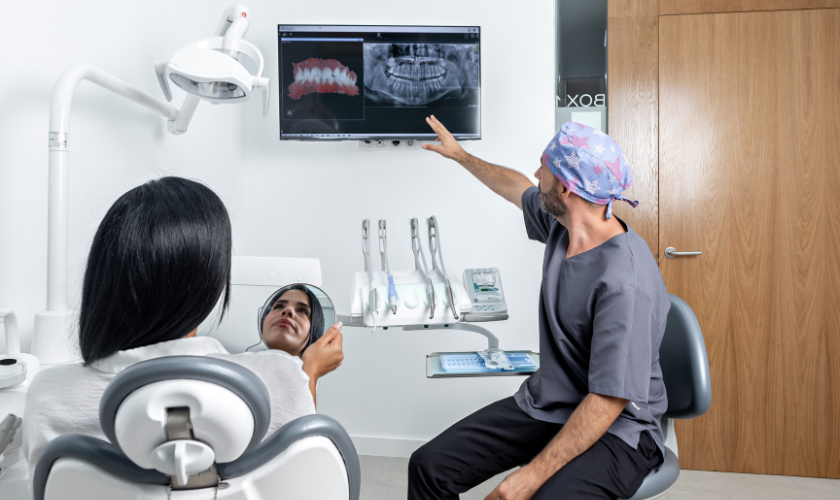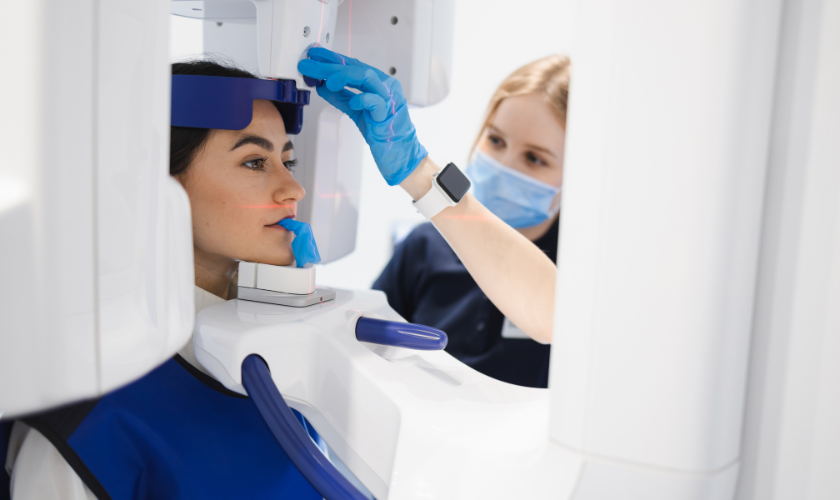2200 AW Grimes Blvd, Suite 100 Round Rock, TX 78665
Understanding the Importance of Dental X-Rays: Safety and Benefits Explained

Dental X-rays, despite being a routine part of dental check-ups, often raise questions and concerns among patients. Yet, these imaging techniques play a crucial role in maintaining good oral health. Let’s delve into why these X-rays are not just important but also safe.
Why Dental X-Rays Are Necessary
Dental X-rays are invaluable tools for dentists to detect problems that aren’t visible during a regular dental exam. Here’s why they’re essential:
- Enhanced Detection: X-rays help identify issues like decay, bone loss, cysts, and tumors that may not be visible to the naked eye.
- Early Intervention: Detecting problems early means they can be treated promptly, preventing more extensive and costly procedures later on.
- Treatment Planning: They provide vital information for treatment planning, ensuring procedures are tailored to your specific needs.
- Tracking Changes: They help dentists track changes in your oral health over time, allowing for proactive care.
Safety Measures in Dental X-Rays
Ensuring patient safety is paramount in X-ray procedures. Modern technology and stringent protocols minimize any potential risks associated with radiation exposure:
- Minimal Radiation: Advanced digital X-rays significantly reduce radiation exposure compared to traditional film X-rays, making them safer.
- Lead Aprons and Collars: Protective lead aprons and collars are routinely used to shield the body from radiation during X-ray procedures.
- Fast Imaging: Digital X-rays produce images quickly, reducing the time patients are exposed to radiation.
- Child-Specific Settings: Pediatric patients receive lower radiation doses, adjusted based on their age and size.
- Regular Maintenance: Regular maintenance and calibration of X-ray equipment ensure accurate imaging with minimal radiation exposure.
Benefits of Dental X-Rays
Despite concerns about radiation, the benefits of dental X-rays far outweigh the risks when used appropriately:
- Early Disease Detection: X-rays can reveal early signs of decay, gum disease, and other oral health issues, enabling timely intervention.
- Accurate Diagnosis: They provide detailed images, aiding in the accurate diagnosis of dental problems.
- Customized Treatment: With precise information from X-rays, dentists can tailor treatments to address your specific needs effectively.
- Preventive Care: Regular X-rays help catch problems before they become serious, preventing more extensive and expensive treatments.
- Educational Tool: X-rays allow dentists to visually explain oral health conditions to patients, promoting better understanding and compliance with treatment plans.
Types of Dental X-Rays
Different types of dental X-rays serve specific purposes in diagnosing various dental conditions:
- Bitewing X-Rays: These show the upper and lower back teeth and are useful for detecting decay between teeth and changes in bone density caused by gum disease.
- Panoramic X-Rays: Offering a broad view of the entire mouth, including the jaw, sinuses, and nasal area, these are useful for planning orthodontic treatment, assessing wisdom teeth, and detecting tumors.
- Periapical X-Rays: These focus on one or two teeth at a time, showing the entire tooth from crown to root, which is helpful for detecting infections, abscesses, and bone changes.
- Cone Beam CT Scans: Providing detailed 3D images, these are used for complex treatments like dental implants, oral surgery, and diagnosing TMJ disorders.
Overcoming Concerns about Dental X-Rays
Despite their importance, some patients still express concerns about X-rays. Here’s how to address common worries:
- Radiation Exposure: The amount of radiation from X-rays is minimal, equivalent to what you receive from a day of natural background radiation.
- Pregnancy Concerns: Dentists take special precautions for pregnant patients, using lead aprons and focusing X-rays away from the abdomen.
- Frequency: X-rays are only recommended when necessary, based on your oral health needs and risk factors.
- Modern Technology: Advancements in digital imaging technology have significantly reduced radiation exposure while improving image quality.
In the realm of dentistry, dental X-rays serve as invaluable tools for diagnosis, treatment planning, and preventive care. Despite concerns about radiation, modern safety measures and the benefits they offer make them an essential part of dental care. At our Round Rock dentist office, we prioritize your safety and well-being, utilizing state-of-the-art technology to ensure precise diagnosis and effective treatment. Trust us with your dental health, and let’s work together to achieve and maintain your brightest smile!


